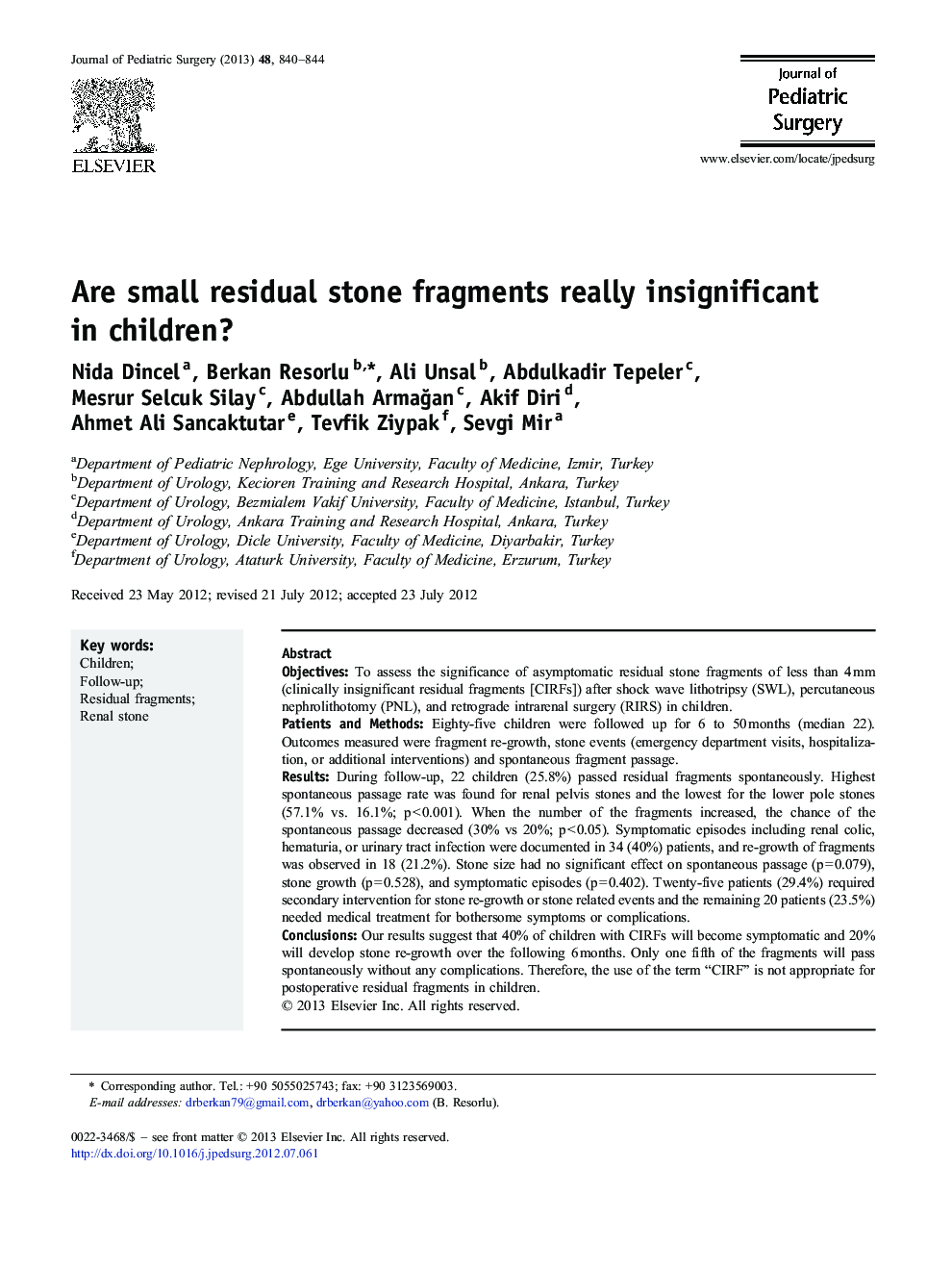| Article ID | Journal | Published Year | Pages | File Type |
|---|---|---|---|---|
| 6217691 | Journal of Pediatric Surgery | 2013 | 5 Pages |
ObjectivesTo assess the significance of asymptomatic residual stone fragments of less than 4 mm (clinically insignificant residual fragments [CIRFs]) after shock wave lithotripsy (SWL), percutaneous nephrolithotomy (PNL), and retrograde intrarenal surgery (RIRS) in children.Patients and MethodsEighty-five children were followed up for 6 to 50 months (median 22). Outcomes measured were fragment re-growth, stone events (emergency department visits, hospitalization, or additional interventions) and spontaneous fragment passage.ResultsDuring follow-up, 22 children (25.8%) passed residual fragments spontaneously. Highest spontaneous passage rate was found for renal pelvis stones and the lowest for the lower pole stones (57.1% vs. 16.1%; p < 0.001). When the number of the fragments increased, the chance of the spontaneous passage decreased (30% vs 20%; p < 0.05). Symptomatic episodes including renal colic, hematuria, or urinary tract infection were documented in 34 (40%) patients, and re-growth of fragments was observed in 18 (21.2%). Stone size had no significant effect on spontaneous passage (p = 0.079), stone growth (p = 0.528), and symptomatic episodes (p = 0.402). Twenty-five patients (29.4%) required secondary intervention for stone re-growth or stone related events and the remaining 20 patients (23.5%) needed medical treatment for bothersome symptoms or complications.ConclusionsOur results suggest that 40% of children with CIRFs will become symptomatic and 20% will develop stone re-growth over the following 6 months. Only one fifth of the fragments will pass spontaneously without any complications. Therefore, the use of the term “CIRF” is not appropriate for postoperative residual fragments in children.
